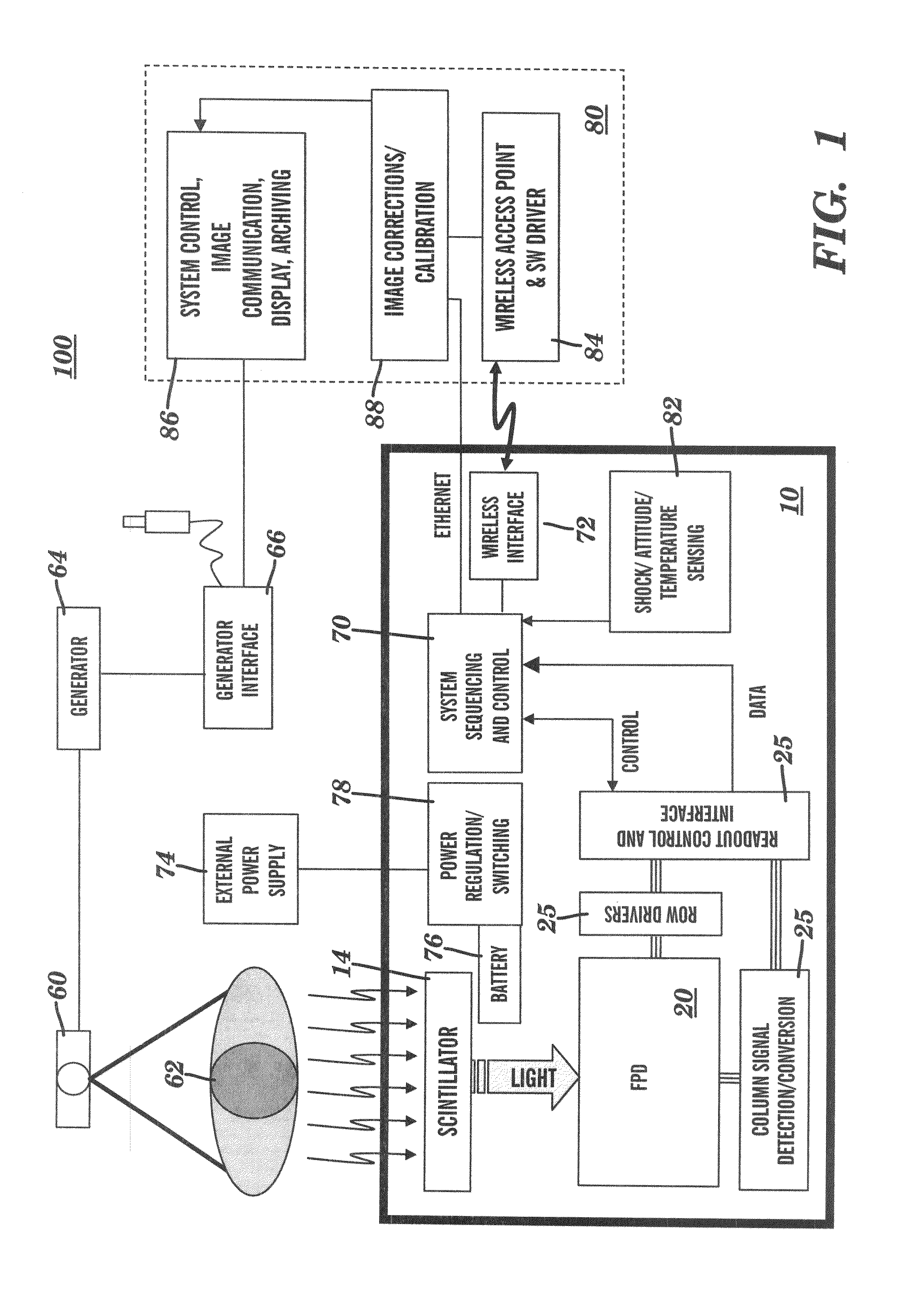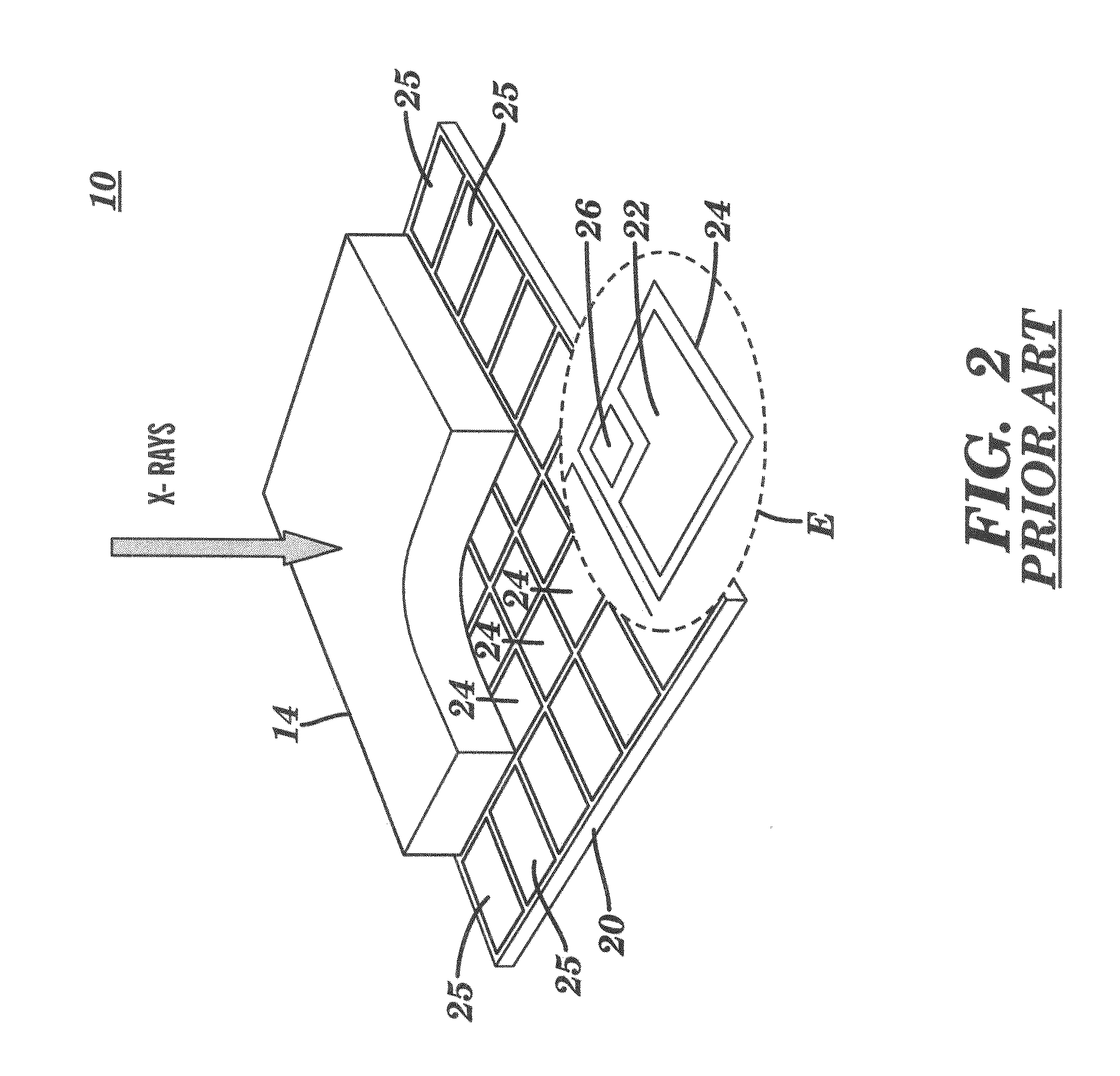Image quality monitor for digital radiography system
a digital radiography and image quality technology, applied in image enhancement, fire alarms, instruments, etc., can solve the problems of affecting the portability of such a device, the large amount of complex miniaturized circuitry of portable dr detectors, and the number of pixels found to be defectiv
- Summary
- Abstract
- Description
- Claims
- Application Information
AI Technical Summary
Benefits of technology
Problems solved by technology
Method used
Image
Examples
Embodiment Construction
[0034]The following is a detailed description of the preferred embodiments of the invention, reference being made to the drawings in which the same reference numerals identify the same elements of structure in each of the several figures.
[0035]The term “set”, as used herein, refers to a non-empty set, as the concept of a collection of elements or members of a set is widely understood in elementary mathematics. The term “subset” as used herein refers to a non-empty subset of a set having one or more members. For a set S, a subset may comprise the complete set S (improper subset) or may have fewer members than the complete set S (proper subset).
[0036]A DR detector system and particular requirements for a portable. DR detector are described with reference to FIG. 1. The schematic diagram of FIG. 1 shows, at a high level, the basic architecture of a radiographic system 100 that uses a portable DR detector 10. An x-ray source 60, with a supporting generator 64 and a generator interface 6...
PUM
 Login to View More
Login to View More Abstract
Description
Claims
Application Information
 Login to View More
Login to View More - R&D
- Intellectual Property
- Life Sciences
- Materials
- Tech Scout
- Unparalleled Data Quality
- Higher Quality Content
- 60% Fewer Hallucinations
Browse by: Latest US Patents, China's latest patents, Technical Efficacy Thesaurus, Application Domain, Technology Topic, Popular Technical Reports.
© 2025 PatSnap. All rights reserved.Legal|Privacy policy|Modern Slavery Act Transparency Statement|Sitemap|About US| Contact US: help@patsnap.com



